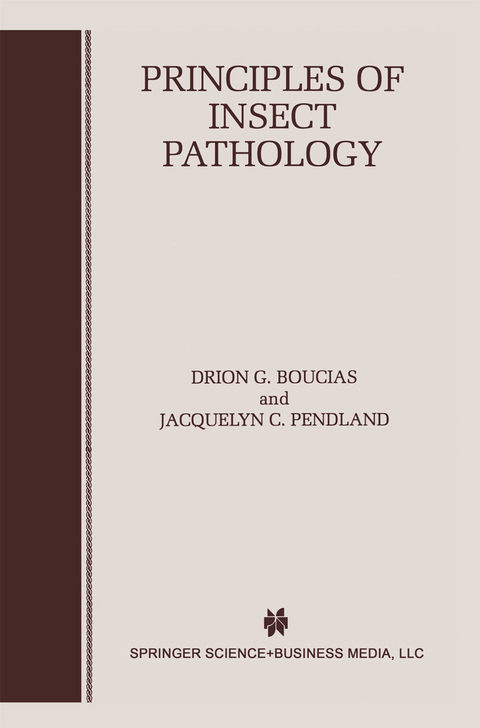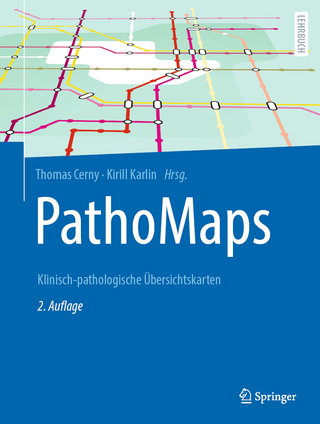
Principles of Insect Pathology
Springer-Verlag New York Inc.
978-1-4613-7229-5 (ISBN)
the major insect pathogens, their characteristics, and their life cycles
the homology that exists among invertebrate, vertebrate, and plant pathogens
the humoral and cellular defense systems of the host insect as well as the evasive and suppressive activities of insect disease agents
the structure and function of passive barriers
the heterogeneity in host susceptibility to insect diseases and associated toxins
the mechanisms regulating the spread and persistence of diseases in insects.
Principles of Insect Pathology combines the disciplines of microbiology (virology, bacteriology, mycology, protozoology), pathology, and immunology within the context of the insect host, providing a format which is understandable to entomologists, microbiologists, and comparative pathologists.
1. Insect-Pathogen Relationships.- 1. Introduction.- 2. Sites of Pathogen Entry.- 3. Insect Integument.- 4. Insect Alimentary Tract.- 5. Spread of Pathogens in the Host Insect.- 6. Survival and Replication of Pathogens in the Insect.- 7. Mechanisms of Cell and Tissue Damage.- 8. Pathogen Egress and Transmission.- 2. General Features of Viral Disease Agents.- 1. Introduction.- 2. Morphology of Insect Viruses.- 3. Composition of Insect Viruses.- 4. Insect Viruses as Etiological Agents of Disease.- 5. Viral Pathogenesis.- 3. Major Groups of Insect Viruses.- 1. Introduction.- 2. Group I (dsDNA viruses).- 3. Group II (ssDNA Viruses).- 4. Group III (dsRNA Viruses).- 5. Group IV (+ ssRNA Viruses).- 6. GroupV (- ssRNA Viruses).- 7. Group VI: Retrovirus-like Particles (Insect Transposable Elements).- 4. Baculoviruses.- 1. Introduction.- 2. Structural Components of Baculoviruses.- 3. Gene Organization.- 4. Baculovirus Cell Cycle.- 5. Baculovirus-Insect Associations.- 5. Characteristics of the Pathogenic Prokaryotes.- 1. Introduction.- 2. Bacterial Characteristics.- 3. Bacterial Growth and Metabolism.- 4. Bacterial Genetics.- 5. Detection of Bacterial Pathogens.- 6. Bacterial Pathogenicity.- 6. Insect Pathogenic Bacteria.- 1. Introduction.- 2. Entomopathogenic Gracilicutes.- 3. Entomopathogenic Firmicutes: Gram Positive, Walled Eubacteria.- 4. Tenericutes: The Cell Wall-less Eubacteria.- 7. Bacillus Thuringiensis: Producer of Potent Insecticidal Toxins.- 1. Introduction.- 2. Isolation and Detection of Bacillus thuringiensis.- 3. Exoenzymes and Exotoxins of Bacillus thuringiensis.- 4. Structure and Diversity of the Delta (?) Endotoxins.- 5. Genetics of Delta Endotoxin Synthesis.- 6. Biosynthesis of Delta Endotoxins.- 7. Mode of Action of the Delta Endotoxins.- 8. Genetic Engineering of Bacillus thuringiensis.- 8. General Properties of Fungal Pathogens.- 1. Introduction to the Fungal Kingdom.- 2. Fungal Characteristics.- 3. Structure and Formation of the Fungal Cell Wall.- 4. The Entomogenous Fungi.- 5. History.- 6. Fungal Disease Symptoms.- 7. The Non-Pathogenic Entomogenous Fungi.- 8. Fungal Pathogenicity.- 9. Pathogenicity and the Infection Pathway.- 9. Entomopathogenic Fungi: “Perfect” Phyla.- 1. The Entomopathogenic Water Molds and Chytrids.- 2. The True Fungi.- 10. Entomopathogenic Fungi: Fungi Imperfecti.- 1. Hyphomycetes.- 2. Nomuraea rileyi: A Dimorphic Hyphomycete.- 3. Beauveria bassiana: A Toxin-Producing Biocontrol Agent.- 4. Metarhizium anisopliae: Cuticle-Degrading Enzymes.- 5. Genus Paecilomyces.- 6. Verticillium lecanii: A Mycopathogen of Homopterans.- 7. Culicinomyces clavisporus: A Hyphomycete of Vector Mosquitos.- 8. Sorosporella-Syngliocladium: Alternate States of a Hyphomycete.- 9. Hirsutella thompsonii, Tolypocladium, and Aspergillus: Production of Secondary Metabolites.- 10. Coelomycetes.- 11. The Entomopathogenic Fungi: Conclusions.- 11. Insect Pathogenic Protozoa.- 1. Introduction.- 2. Phylum Apicomplexa.- 3. Phylum Ciliophora.- 4. Phylum Rhizopoda.- 5. Phylum Zoomastigina.- 12. Phylum Microsporidia.- 1. Introduction.- 2. General Structure and Biology.- 3. The Identification and Systematics of Microsporidia.- 4. Representative Genera of Insect Microsporidia.- 13. Insect Immune Defense System, Part I: Innate Defense Reactions.- 1. Introduction.- 2. Invertebrate Members of the Ig Supergene Family.- 3. Innate Immunity.- 14. Insect Immune Defense System, Part II: the Recognition of Nonself.- 1. Introduction.- 2. Phagocytic Cells.- 3. The Phagocytic Process.- 15. Insect Immune Defense System, Part III: Prophenoloxidase Cascade and Post-Attachment Processes of Phagocytosis.- 1. Insect Phenoloxidase.- 2. Phenoloxidase-Related Specific Immune Defense Activities.- 3. Post-Attachment Processes of Phagocytosis.- 4. Microbial Evasion of Cellular Immune Response.- 5. Summary.
| Zusatzinfo | XV, 550 p. |
|---|---|
| Verlagsort | New York, NY |
| Sprache | englisch |
| Maße | 155 x 235 mm |
| Themenwelt | Studium ► 2. Studienabschnitt (Klinik) ► Pathologie |
| Naturwissenschaften ► Biologie ► Biochemie | |
| Naturwissenschaften ► Biologie ► Botanik | |
| Naturwissenschaften ► Biologie ► Evolution | |
| Naturwissenschaften ► Biologie ► Zoologie | |
| Weitere Fachgebiete ► Land- / Forstwirtschaft / Fischerei | |
| ISBN-10 | 1-4613-7229-1 / 1461372291 |
| ISBN-13 | 978-1-4613-7229-5 / 9781461372295 |
| Zustand | Neuware |
| Haben Sie eine Frage zum Produkt? |
aus dem Bereich


